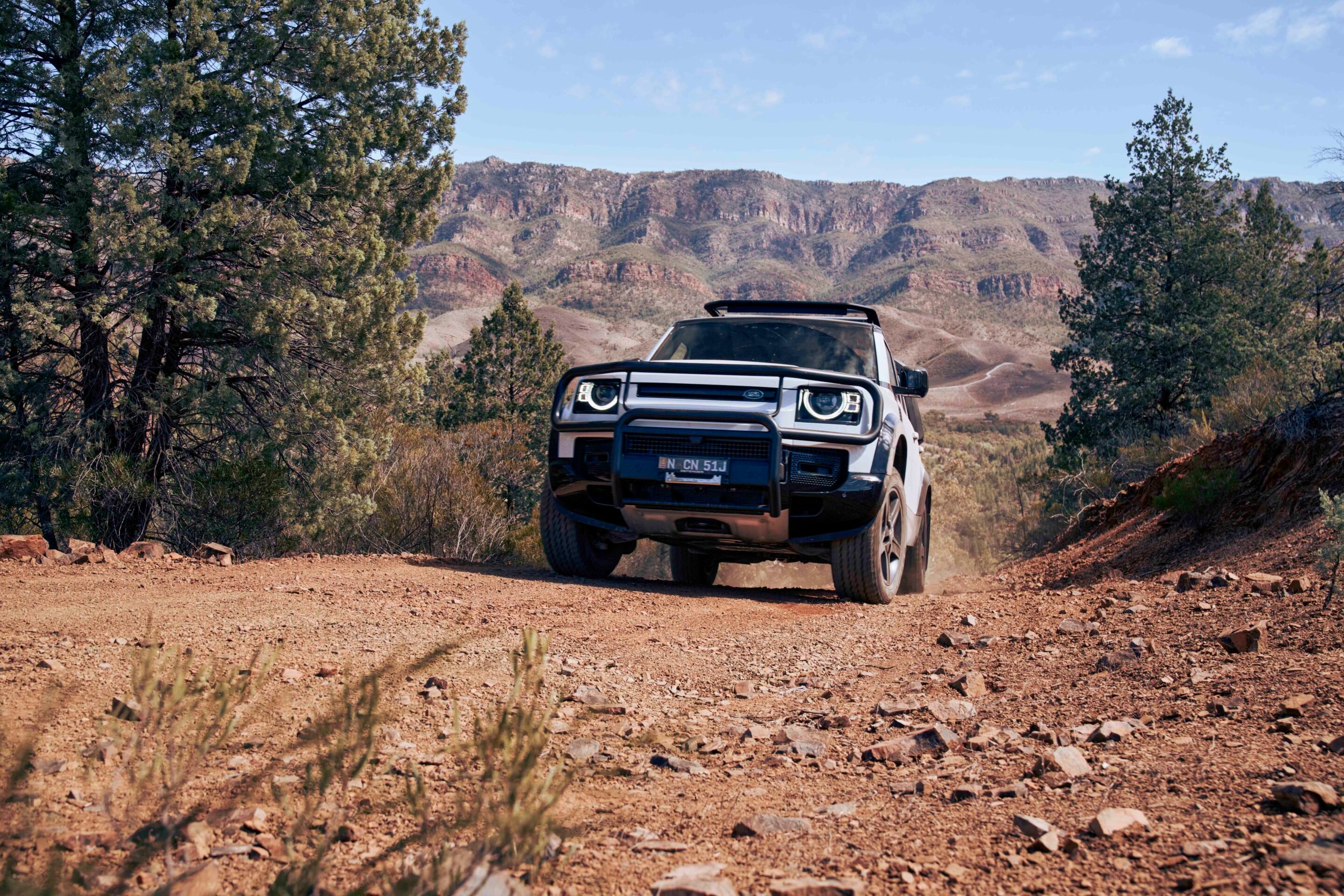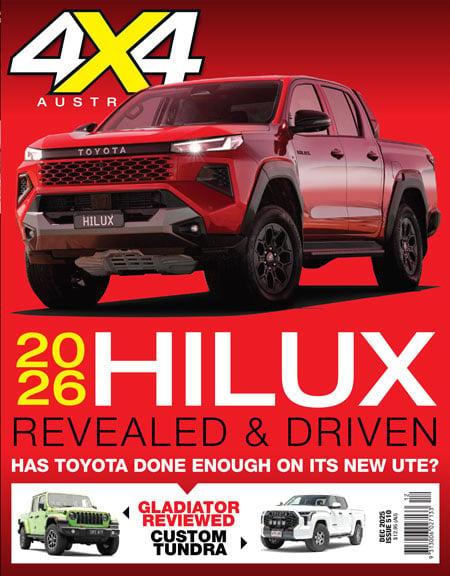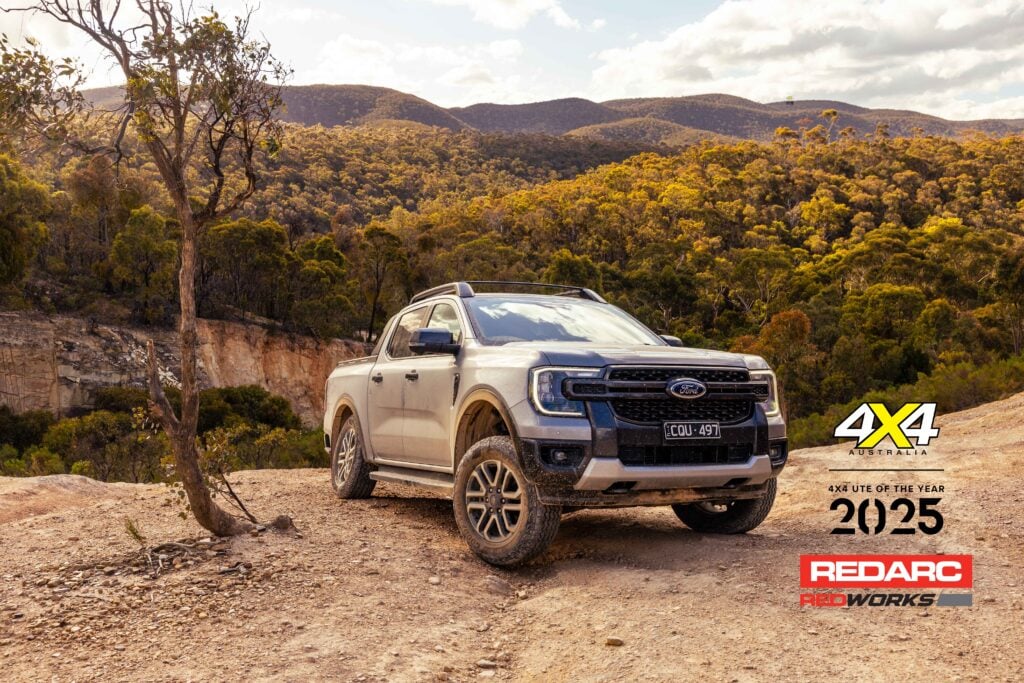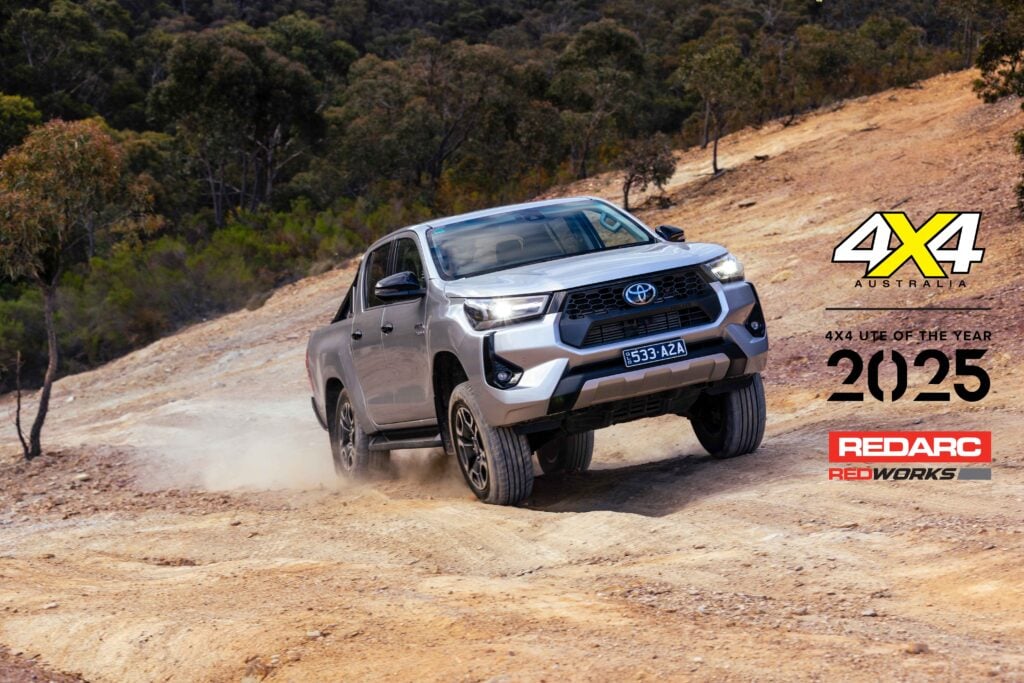Things we like
- Broad range of on- and off-road capabilities
- Clever interior design
- Superb drivetrain
Not so much
- Options needed to get the right spec
- Limited aftermarket support
- Low profile tyres with limited options
The modern Land Rover Defender has now been with us for more than five years and it’s been easy to forget about it since it arrived on the market to replace what for most people was the classic Land Rover.
With unibody construction, fully independent air suspension, modern powertrains and features, plus a much higher price than the original commercial-grade model, the new Defender fell off the radar of many 4×4 buyers. But more importantly, it has attracted a swag of new buyers to the marque with its mix of unique design, luxury and capability.
While you can spend more than $300,000 on a new Defender OCTA (no, that’s not a misprint!) there are more sensible options for adventurous buyers at the bottom of the range with pricing, specification and capabilities in line with alternatives including the Toyota LandCruiser 300 and Nissan Patrol Warrior.
JUMP AHEAD
What do you get?
Take the Defender D350 X-Dynamic SE we are driving here, which starts at just $108,795 +ORC. The D350 is now the entry-level model for the 110 five-door Defender wagon (excluding the Hardtop) but with its superb 700Nm/258kW inline-six cylinder diesel engine, fully independent height adjustable air suspension and a high level of luxury, it could hardly be considered an entry-level vehicle.
The D350 replaced the D300-spec Ingenium engine late in 2024 and most significantly upped the torque output from 500Nm to 700Nm. This sizable step up in grunt makes the Defender 110 a nicer and easier vehicle to drive on both the open road and mountain tracks, all while maintaining a high level of refinement.
As has become the case with modern Land Rovers, the base price isn’t a true reflection of what you will end up paying, as there are pages of option packs that when added jack up the final figure significantly.

This particular Defender was equipped with the Capability Plus Pack which adds Terrain Response 2 (configurable) and All Terrain Progress Control (ATPC). The Air Suspension pack adds the height-adjustable suspension and adaptive dynamics; the Off Road Pack gives the D350 an Active Differential with Torque vectoring by braking, off-road all-terrain tyres, wade sensing, a domestic plug socket (GPO) outlet and black roof rails.
Inside, the Premium upgrade interior pack adds a full Windsor leather interior, leather steering wheel, power adjustable steering column, leather gear shift, 14-way heated and cooled electric memory front seats with four-way manual headrests, while the cold climate pack adds a heated steering wheel, windscreen and washer nozzles.
Add on the $4629 bull bar, front underbody shield, roof ladder, exterior side-mounted gear carrier, integrated air compressor, privacy side windows, a tow hitch receiver, body-coloured spare wheel cover, wheel-arch protection, rubber floor mats, mudflaps and tow hitch, and it jacks the total price for this particular Defender up to $144,891 +ORC.
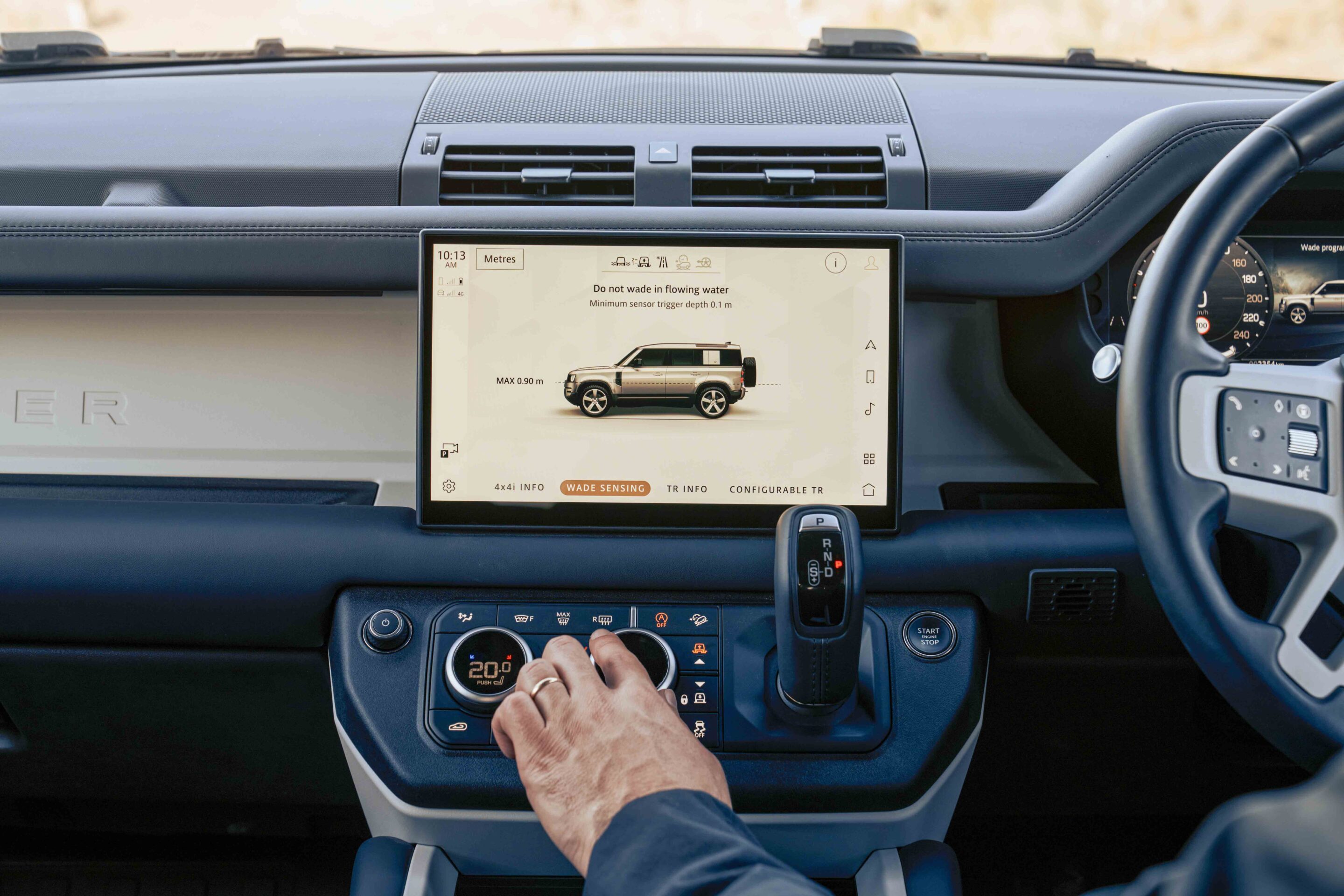
Almost $40k worth of accessories isn’t unusual for anyone doing a full fit-out on a touring 4×4 but these are all factory Land Rover accessories that are made specifically for the vehicle and covered by factory warranty. And, let’s be honest, there are a few in there that you could live without.
Standard kit includes a full suite of safety electronics including TPMS, a premium sound system that gives you inbuilt sat-nav plus Apple and Android mirroring and wireless phone charging, five seats with an optional third row, heated and cooled front seats, 20-inch alloy wheels, and a funky design inside and out that is sorely missing from most new 4x4s these days.
The second-row seat folds flat to give a long, flat cargo area; it’s large enough that I have rolled the swag out on it on a wet and windy High Country night on a previous trip, and I’m 185cm tall!
Off-road performance
There was no such inclement weather for this Defender drive in South Australia’s stunning Flinders Ranges. Much of the drive was done on Arkaba Station which provided a wide variety of terrain and track conditions.
The tracks allowed us to sample the various drive modes of the Defender in both high and low range, and to play with the suspension height settings to feel how they affect the wheel travel and hence the tractive ability of the vehicle.
When driving in the full-raised off-road height setting, the suspension runs out of travel sooner and can create a small amount of slip from the tyre, whereas covering the same terrain in the standard height setting (where ground clearance permits) allows the suspension to work better in keeping the tyre on the track. You shouldn’t think of this as a negative though, and the raised ride height gives the Defender more ground clearance than almost anything else in this class, and the rear locking diff quickly accounts for any loss of traction.
Land Rover invented Terrain Response when it introduced it on the Discovery 3 way back in 2004, and it has been copied by just about every 4×4 manufacturer since then but never bettered. Like many, I prefer the earlier Terrain Response interface, as it was easier to operate on the run with its tactile dial for simple mode selection.
Choosing the right Terrain Response mode for the conditions ahead optimises all the chassis and control systems for the best performance. For example, selecting the Grass, Gravel, Snow mode for the loose tracks on Arkaba instantly raises the ride height via the air suspension, sharpens up the activation of the electronic traction control (ETC) to better react to loose surfaces, and dulls down the throttle response for better control under your right boot.
Select a more aggressive mode like Rock Crawl and Terrain Response sets the centre and rear diffs to their most aggressive intervention level, gives maximum ride height and dulls the throttle pedal right down. Driving around the varied terrain on Arkaba showed that the most aggressive settings are not always the best for all tracks, and selecting the correct mode for the terrain will make your journey easier and more comfortable.

I’d be lying if I said I wasn’t concerned about the low-profile tyres on the sharp rocky tracks at Arkaba, but the Goodyear all terrains stood up to the punishment and gave us no problems. There’s a wider range of off-road tyre options for large diameter wheels these days than in the past, even if they are not ideally suited to gravel and rocky surfaces. You could fit 19-inch wheels to this spec Defender but there are more tyre options available for the 20s. The factory 18s will not fit on this Defender but there are some aftermarket 18-inch options that will.
As steep and rugged as Arkaba’s tracks are, the Defender D350 dodn’t raise a sweat and its off-road capability was never really challenged. Even when we intentionally took the wrong line on a track to try and trip up the Defender, it took it all in its stride and pushed on through without fuss.
| Off-road specs | |
|---|---|
| Approach angle | 37.6 |
| Rampover angle | 27.9 |
| Departure angle | 41.9 |
| Ground clearance | 293mm at max height |
| Wading depth | 900mm |
On-road performance
The road drive component of our Defender D350 test was on the open country between Hawker and Adelaide, and again the Defender showed its abilities by effortlessly overtaking slower vehicles, capably avoiding roadkill that sometimes required quick action, and delivering vehicle occupants safely and in comfort.
Phone pairing was a no-fuss affair providing tunes and navigation for the drive; the dual zone climate control kept the cabin temperature as set; and the drink bottle holders accommodated large vessels. It really is a fantastic long-distance tourer.
While the Defender range offers more powerful and refined petrol I6 and V8 engines, there’s absolutely nothing wrong with the Ingenium I6 diesel in the D350 – 700Nm of torque is nothing to be sneezed at, and it is delivered in a much smoother way than the LandCruiser 300’s V6 engine can manage.

Verdict
Optioned up as this vehicle is with the various packs and accessories, it makes an excellent touring and off-road wagon that offers more style and comfort than the popular Toyota or Nissan alternatives. The Defender might not be for everyone, but at this spec and price it deserves more attention from touring 4×4 buyers.
| Specs: Land Rover Defender D350 110 X-Dynamic | |
|---|---|
| Price | $109,880 (RRP); $144,891 (as tested) |
| Engine | I6 diesel twin-turbo |
| Capacity | 2997cc |
| Max power | 258kW @ 4,000 rpm |
| Max torque | 700Nm @ 1,500-3,000 rpm |
| Transmission | 8-speed automatic |
| 4×4 system | Full-time, dual-range |
| Construction | 5-door wagon on monocoque chassis |
| Front suspension | Independent height adjustable air |
| Rear suspension | Independent height adjustable air |
| Tyres | 255/55-20 |
| Weight | 2436kg |
| GVM | 3200kg |
| GCM | 6700kg |
| Towing capacity | 3500kg |
| Seats | 5 |
| Fuel tank | 89L (Ad-blue 20.7L) |
| ADR Fuel consumption | 8.1L/100km |
Things we like
- Broad range of on- and off-road capabilities
- Clever interior design
- Superb drivetrain
Not so much
- Options needed to get the right spec
- Limited aftermarket support
- Low profile tyres with limited options
We recommend
-
 News
News2026 Land Rover Defender upgraded: Full pricing revealed
2025 Defender update brings expanded V8 options, tech upgrades, and new features
-
 News
NewsLand Rover Classic Defender V8 Soft Top revived, returning with an eye-watering price tag
Land Rover Classic brings back the revered V8-powered icon
-
 News
News2024 Land Rover Defender OCTA to debut in Australia this week
The high-performance hero variant will make its local debut at SXSW Sydney


